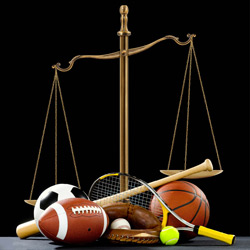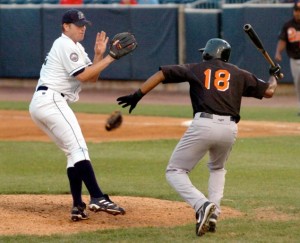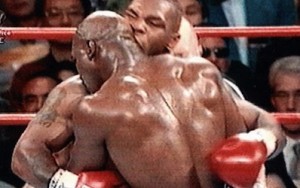In this blog post. Abhiraj Thakur student NALSAR University of Law writes about the possibilities of application of tort law in sports. He tries to elucidate on the importance of tort law, along with criminal and contractual law, for the regulation of malpractices in sports.
A majority of us often find the front pages of our newspapers dull and dry. The pages filled with scams, killings and other blatant crimes which present the gloomy situation of our country, we’d rather to skip to sports to find something interesting.[1] Sports today has become a truly global phenomena. Owing to advancements in satellite technology, sports has reached every home, both as recreational pastime as well as an activity to participate in and enjoy. It further accounts for nearly 4% of the global Trade.[2] However, Now-a-days even the sports page is constantly becoming uninteresting thanks to large number of unscrupulous activities reported every day. The question that here arises is of how to regulate them. The obvious answer is through laws.
Sports Laws is a relatively new branch of law. Since it is still developing, many jurists consider it to be at an embryonic stage. In Indian perspective, there is no specific definition of sports law in any of the legislations of the country; as a result different sports federations in the country define it differently. For example, the Sport Law and Welfare Association of India defines sports law as “one of the fields of applied law for sports, physical education and other related fields. It is a pure law and not a theoretical one and helps in interaction of law with sports”[3]. Over the course of time many government and quasi-government authorities have raised concerns about the growing harmful activities in sports and the need of special laws for the same.[4] One such government body, The Sports Authority of India, was instrumental behind the drafting of the National Sports Policy in 2001. Apart from this many state governments have made laws to regulate sporting activities.[5]
Why Tort Law?
Vastness of the Industry
For the past five decades, sports as an industry, is one of the few legit ones that has constantly been on the boom as a result the expansion is rapid. Today the sports fraternity encompasses sports broadcasters, equipment manufacturers, sports medicine care providers, corporations that sponsor athletic events or athletes, concessionaires who serve food and drink to fans at games, and others that provide sports-related goods and services. The vast number of stakeholders implies vast interests which need to be looked after. To maintain the efficiency of the market, the backlogs need to be selectively dealt with. Put simply, the grievance of a player can be entirely different from that of a manufacturer.
Yet unexplored
The applicability of tort law in sports has been by and large unexplored by the judiciary. Criminal law and contract law though have gained a firm foothold in sports but the new developments taking place every day along with all the possibilities in such a widespread industry cannot ever be dichotomised simply as a civil or criminal matter. Also, the source of criminal and contractual jurisprudence on sports laws are vast as a result of large number of laws being in existence. This is not the case with law of torts.
Law not being codified works as an advantage
Lastly, Tort law is an area in which development is never stalled. Not being present in black and white, it has historically given jurists a much wider space for interpretation and application.
Assault, Battery and other Intentional Torts
A person can be held liable for Battery if he/she acts with an intention of having a harmful or offensive contact with another person and this directly or indirectly results in the offensive contact with the other person. Further, in case of assault, a person can be held liable for when he/she acts with the intention of causing harmful or offensive contact and as a result creates a reasonable apprehension in the other person. The principle difference between the two being that, physical contact is necessary in battery.[6] We find many instances in sports where such situations arise where without having physical contact as such, e.g., fights can ensue between players.
In USA, there have been instances where baseball bats were thrown in anger which often threatened the opposition players. This is a common practice in baseball referred to as bat flip.[7]Due to lack of jurisprudence for tort application, the player is just let off by payment of meagre fees as penalty. A well known incident occurred in Indian premier League between West Indian cricketer Keiron Pollard and Aussie Mitchell Starc.[8]
Negligence
Simply put, negligence is a conduct that falls below par as compared to that of a reasonable man. Every human being is expected to uphold a reasonable standard of care. If the breach of such care causes a legal injury, the claim for remedy under tort law stands.
Sports have not been immune to negligence. Numerous cases of claims under negligence have baffled the judiciary over the years. For conduct to be negligent, it has to be below the reasonable standard of care. This is a subjective determination and so it often becomes problematic to find conclusive results. The most notable examples are of violent sports like football, hockey, boxing, judo along with many others where the determination of appropriate standard of care has always been a contentious issue. With the application of standard of care, it is often said that the significance of these games would be lost. The aggressive style of play is an inherent quality of such sports and an important factor that binds the audiences together.[9]
Recklessness
An actor’s conduct is deemed reckless under tort law if in regards to safety of another, he does an act or omits to do an act which is his duty, having the reason to believe not only that his conduct creates an unreasonable risk of physical harm to another but also that such risk is substantially greater than which is necessary to make his conduct negligent.[10] This has been the most contested tort in the arena of sports. From game organisers to players, all have been held liable for recklessness many a times.
Defences
Contributory Negligence
While exploring the possibility of application of specific torts, it also becomes necessary to look for defences which are most common in torts. One of such defences is Contributory negligence. An injured actor’s contributory negligence would bar recovery against any person whose negligence resulted in his injury. Contributory negligence has effective application in sports.
Volenti Non fit Injuria
Volenti non fit injuria is the assumption of risk in tort law. It simply implies that the plaintiff had known or reasonably expected to know or has voluntarily given consent to suffer the risk of harm. Cases have been witnessed in boxing, judo and other martial arts. The most pertinent example of this was the case of boxer Mike Tyson. During a heavyweight boxing match in 1997, Tyson bit the left ear of rival Evander Hollifield.[11] The most notable defence taken by Tyson was of volenti non fit injuria that the fellow boxer must have known the risks involved in boxing.
Few relevant considerations before holding sporting co-participants liable in tort are:
- The ever changing nature of sports, the growth in commercialization and marketing of sporting events makes it mandatory for the corporate involved to make profits. For this, the aggressive nature of sports is promoted which is considered helpful in attracting audiences.
- With the modern computer gaming, field sports have been facing tough competition while garnering participants. A strict application of tort law in this regard may not be helpful in long run.
With the increasing opportunities in sports, it becomes necessary that judicial system becomes quick and efficient. In this regard, exploring new contours of law in sports becomes necessary. Torts has been the part of common law for a long time and along with the presence of criminal and contractual provisions, torts can act as another means to address the grievances of stakeholders in sports. A line needs to be drawn between wider public interest of justice and corporate goals of making profits; how efficient is tort law in this regard is a thing to look for in long run.
[1] Sport law and welfare association of India http://www.sportslawindia.info/sportslaw.htm Last accessed 26th May 2016
[2] ibid.
[3] Tomlinson, A.(ed), The sports studies Reader: sports, culture and society (2001), London, Rutledge.
[4] Emerging Sports Law In India” http://lawquestinternational.com/emerging-sports-law-india
[5] Commission Staff Working Paper, Directorate General X
[6] Prosser &keeton, the law of torts
[7]Keh, Andrew (September 2, 2015). “Bat flipping draws shrugs in South Korea but scorn in America”. The New York Times.Retrieved November 11, 2015.
[8]http://www.espncricinfo.com/indian-premier-league-2014/content/story/742639.html
[9] The American Restatement of Torts, Second is an influential treatise issued by the American Law Institute.
[10] Supra Note 5
[11]“Mike Tyson Assaults”, New York Law Journal, vol. 218, no.3.
 Serato DJ Crack 2025Serato DJ PRO Crack
Serato DJ Crack 2025Serato DJ PRO Crack














 Allow notifications
Allow notifications



